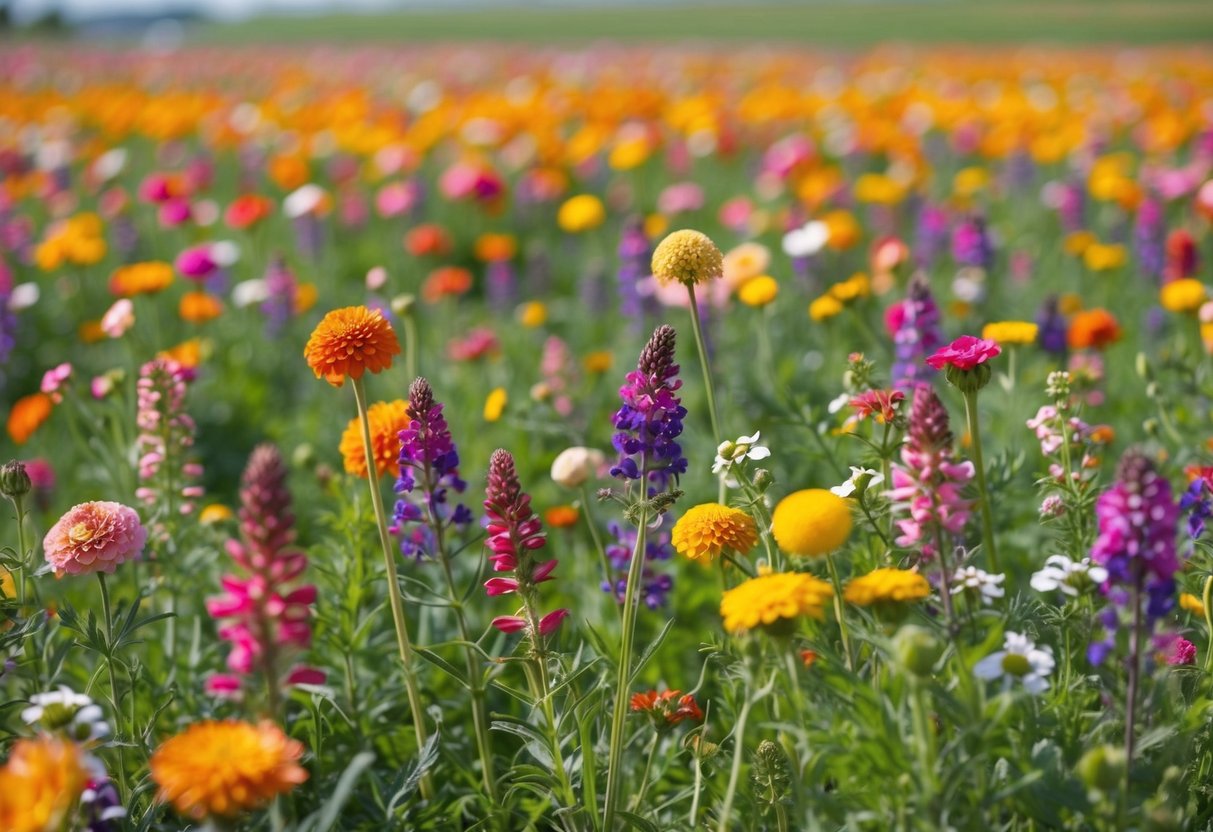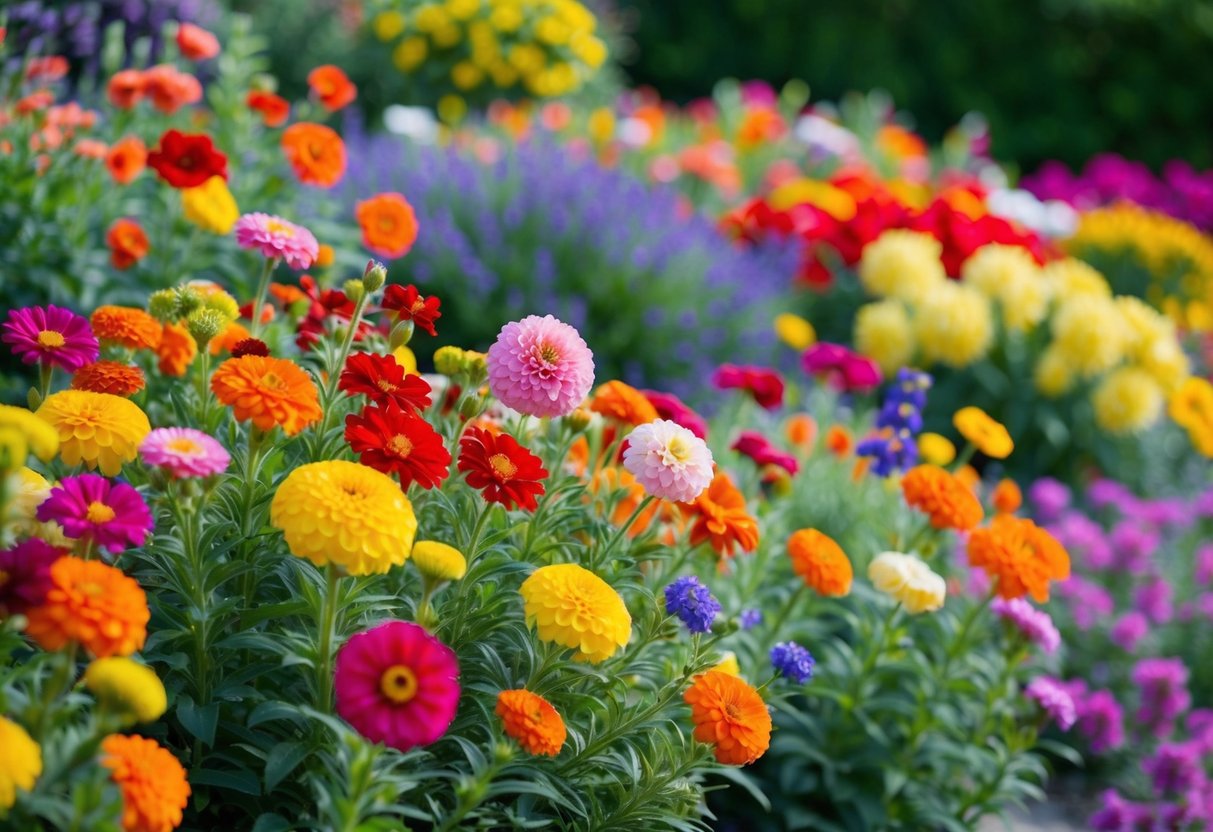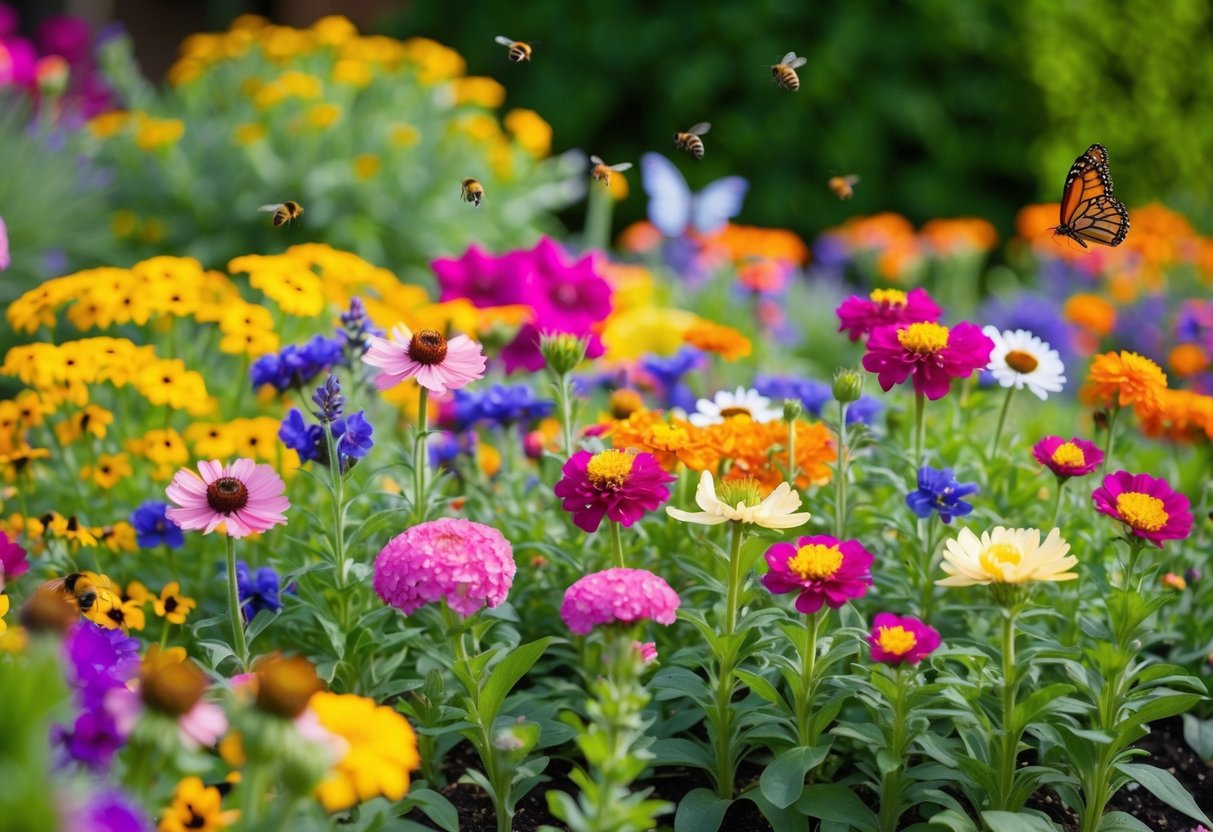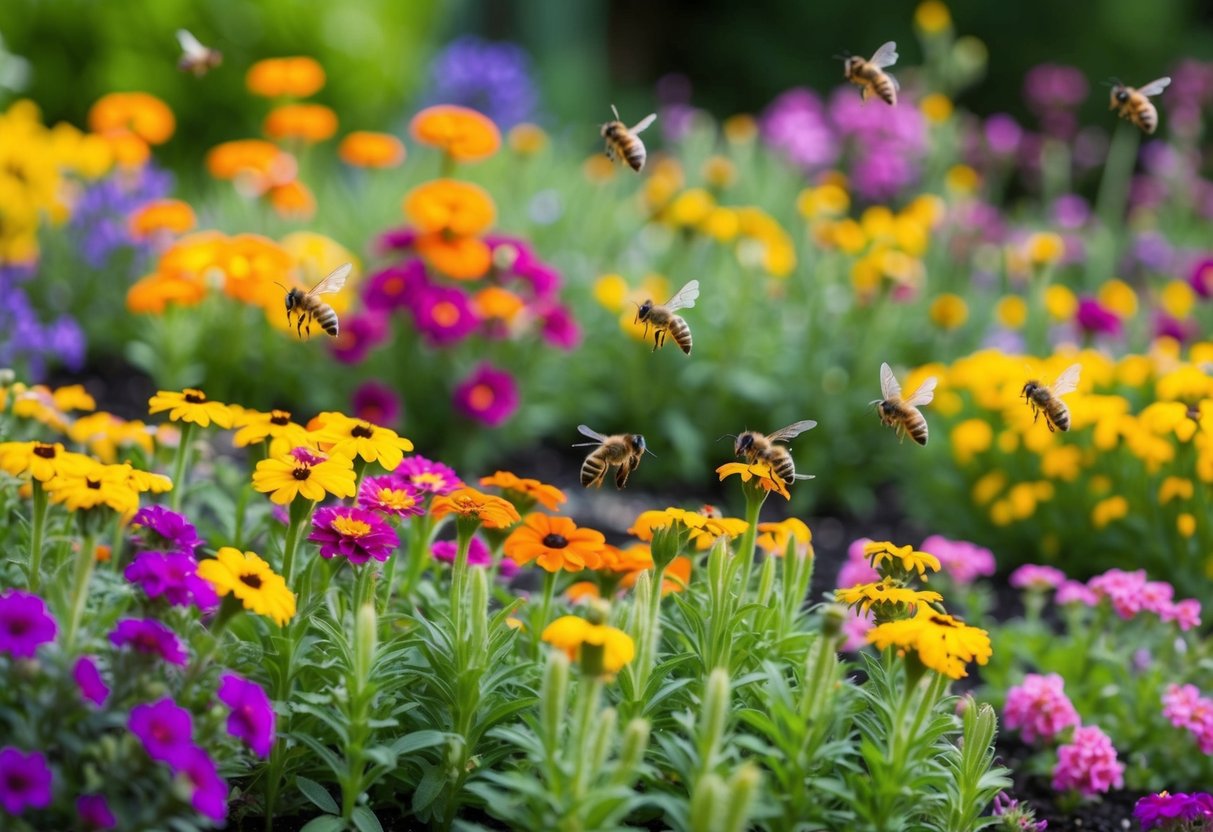What is the Most Popular Annual Flower? A Blooming Guide for Garden Lovers
When you’re planning your garden, choosing the right flowers can transform your space into a vibrant paradise.
Annual flowers add stunning color and charm as they bloom beautifully throughout the season. Among the most popular annual flowers is the petunia, cherished for its vibrant colors and ability to thrive in full sun.

Petunias are a favorite because they are easy to grow and maintain. You can find them in a wide range of colors, which makes it simple to add a splash of personality to your garden.
Whether you prefer classic reds, pinks, or even purples and blues, these flowers can give you the color variety you crave.
By planting petunias, you not only get beautiful blooms but also a chance to experiment with other annuals. The flexibility in color choices lets you create eye-catching flower beds that stand out. If you’re looking for a lively and colorful garden this year, petunias might be the perfect choice for you.
Popular Annual Flowers and Their Characteristics

Annual flowers provide a burst of color and energy to any garden. Some popular varieties are known for their vibrant blooms and adaptability to different environments. This guide explores these blossoms, focusing on how they can enhance your garden space.
Understanding Annuals
Annuals are plants that go through their entire life cycle, from seed to bloom, within one growing season. This means you get to enjoy their vibrant colors without the commitment of perennial plants.
Common choices include marigolds and zinnias, which are known for their bright petals and ability to attract pollinators. These plants are perfect for garden beds, borders, and containers.
Many annuals add visual appeal without much effort. Petunias, for instance, require little more than well-drained soil and regular watering. With a variety of colors to choose from, annuals can suit any garden style you prefer.
The Colorful Varieties
Annual flowers come in a stunning array of colors. Petunias are available in nearly every color of the rainbow, adding splendor to your garden space.
From the intense oranges and yellows of marigolds to the soft pinks and purples of cosmos, the choices feel endless. These blooms not only beautify your garden but also attract beneficial pollinators.
Cosmos provide daisy-like flowers that sway gently in the breeze, making them eye-catching focal points. Impatiens is another great choice for adding bursts of color to shaded areas. With their profusion of blooms, they offer a dramatic effect without much hassle.
Annuals for Full Sun
For gardens with plenty of sunlight, consider planting sun-hardy annuals.
Sunflowers thrive in full sun, growing tall and strong while producing large, cheerful blooms. Zinnias are another excellent choice for sunny spots, providing vibrant blooms throughout the summer.
These flowers are not only beautiful but also support garden biodiversity by attracting bees and butterflies.
Marigolds are particularly tough and can withstand the heat of the summer sun. They are often used in companion planting to deter pests, thanks to their strong scent. Lobelia can add a touch of elegance with its cascading blooms, perfect for hanging baskets in sunny areas.
Annuals for Shade
Gardening in shady areas can be challenging, but many annuals thrive in low-light conditions.
Impatiens are a classic choice for shade gardens; their stunning blooms brighten up darker corners. They come in vibrant hues of red, pink, and white, and are easy to care for with regular watering.
Begonias are another shade-tolerant option, known for their attractive foliage and delicate flowers. These plants can be grown in containers or garden beds. Lobelias are also notable for their ability to grow in partial shade, offering a stunning display of blue or purple flowers.
Caring for Annual Flowers

Annual flowers bring vibrant color to your garden but need the right care to thrive and bloom fully. Key aspects include proper watering and feeding, understanding the importance of deadheading, and ensuring the right soil and drainage conditions.
Watering and Feeding
Proper watering is essential for annuals. Most annual flowers prefer soil that is moist but not soggy.
Check the top inch of soil; if it’s dry, it’s time to water. Be consistent, especially in hot weather, as some annuals are less drought tolerant.
In terms of feeding, a balanced liquid fertilizer every four to six weeks supports healthy growth. Choose one suited for flowering plants.
Be careful not to over-fertilize, which might damage the roots. Always follow the instructions on the fertilizer package to avoid harm to your flowers.
The Role of Deadheading
Deadheading, or removing spent flowers, encourages annuals to keep blooming. This process prevents the plant from putting energy into seed production.
Using clean scissors, snip off dead blooms regularly. This will promote more buds and extend the flowering period.
Deadheading also helps maintain a neat appearance in your garden. Make it part of your routine to check for any faded blooms. By doing this, your plants will remain vibrant and continue to impress with their colorful displays.
Soil and Drainage
Annual flowers thrive best in well-drained soil. Compacted or waterlogged soil can be problematic and might lead to root rot.
If your garden soil doesn’t drain well, consider adding compost or using raised beds.
Check the hardiness zones of your chosen plants. Some annuals might only survive one season in harsher climates. Adjust your soil’s pH if needed to match specific plant needs.
To ensure good drainage, avoid hard, compact soils and consider mixing in sand or perlite if your soil retains too much moisture.
Proper soil care helps annuals grow strong roots and achieve their full flowering potential.
Designing with Annuals

Annuals offer a burst of color and flexibility for various garden setups. Their vibrant blooms can complement flower beds, containers, and more, adding beauty to your space. They also work well in cut flower gardens for fresh bouquets.
Garden and Bedding Designs
When designing garden and bedding spaces, annuals are a wonderful way to add consistent color.
You can mix colors and textures to create vibrant garden designs. Mass planting with annual bedding plants allows for a uniform look that stands out. Many gardeners enjoy using marigolds, zinnias, and cosmos for their long-lasting flowers.
Creating mixed borders with different heights and hues can enhance your garden’s visual appeal. Choose taller varieties like sunflowers or larkspur in the back, and smaller blooms like petunias in the front. This layered effect provides depth and interest, making your garden beds come alive.
Container Gardening and Hanging Baskets
Annuals are perfect for container gardening and hanging baskets. They allow you to take advantage of limited space while giving you the freedom to move plants around as needed.
A combination of annual flower pairs can create exciting displays in pots or baskets.
Consider using trailing plants like sweet peas or cascading petunias for hanging baskets. Their growth pattern encourages a lush look that spills over the sides.
When choosing container plants, ensure they have similar light and water needs to thrive together. Containers can be placed on patios, balconies, or around entryways to bring charm to any area.
Annuals in Cut Flower Gardens
Using annuals in cut flower gardens offers an easy way to have fresh blooms indoors.
Flowers like zinnias, sweet peas, and marigolds are popular choices for cutting, as they last well in vases. Planting these annuals ensures a continuous supply of flowers throughout the growing season.
Space your annuals out in rows to facilitate easy cutting. Tend to the plants regularly, ensuring they receive adequate water and nutrients. Deadheading spent blooms can encourage new growth, giving you a longer harvest period.
Adding annuals to your cut flower garden allows you to enjoy both the beauty of your garden and fresh bouquets at home.
Extending Blooms and Seasonal Tips

To enjoy beautiful annual flowers all season long, it’s essential to consider some practical tips. You’ll discover strategies like succession planting and selecting flowers that maintain vibrant colors. Plus, learn how caring for your plants properly can help them thrive longer.
Succession Planting
Succession planting is a fantastic way to keep your garden blooming throughout the season. By planting flowers at different times, you ensure that as one group starts to fade, another begins to bloom.
Start with early-season varieties and follow with mid-season ones. Think about low-maintenance plants that still provide continuous beauty.
Consider creating a planting calendar. This helps you track when and where each flower is planted. Practical steps like these keep your garden looking vibrant with minimal fuss.
Selecting for Continuous Color
Choosing the right flowers is crucial for a colorful garden all summer long.
Select flowers known for their long-lasting blooms, such as marigolds and petunias. These types of flowers keep your garden lively without requiring constant replanting.
Mixing colors and types can also create a captivating display. Balance bold colors with softer shades. This approach gives your garden depth. Use flowers that bloom in succession for variety throughout the season.
Seasonal Care for Longevity
Taking care of your flowers correctly is key to extending their life.
Most annuals need consistent moisture, so regular watering helps. Also, periodically remove spent blooms. This process, known as deadheading, encourages more blooms to develop.
Fertilizing your plants with a balanced fertilizer supports healthy growth. Remember to pay attention to pest control. Address any issues promptly to prevent more damage. All these care tips ensure your flowers continue to thrive and enhance your garden season after season.
Attracting Wildlife with Annuals

Annual plants are a delightful way to bring vibrant color to your garden while also supporting wildlife. Certain annuals can attract beneficial pollinators, creating a lively and balanced ecosystem in your outdoor space.
Plants for Pollinators
If you want to attract pollinators like hummingbirds and butterflies, consider planting annuals with bright, tubular flowers.
Zinnias and sunflowers are popular choices that bloom in various colors, making them both attractive and useful to wildlife.
Sunflowers can reach up to 28 inches and thrive in full sun, ensuring their flowers are perfect for energetic pollinators. Salvia is another excellent option with its spikes of colorful flowers. It draws in both butterflies and hummingbirds, adding beauty and movement to your garden.
These vibrant blooms not only brighten your garden with color but also provide essential nectar for wildlife throughout the growing season.
Creating a Wildlife-friendly Habitat
To create a welcoming environment for wildlife, think about more than just the flowers. Arrange plants with varying heights so different types of animals feel comfortable.
Include water sources, like birdbaths, and add some flat stones where butterflies can rest and soak up the sun.
Use mulch or leave small patches of bare soil for ground-nesting bees. Also, limit the use of pesticides to protect the creatures visiting your garden.
Whether you add cornflowers or impatiens, ensure that they are well-suited for attracting wildlife. These small adjustments can turn your garden into a lively home for many varieties of wildlife.







